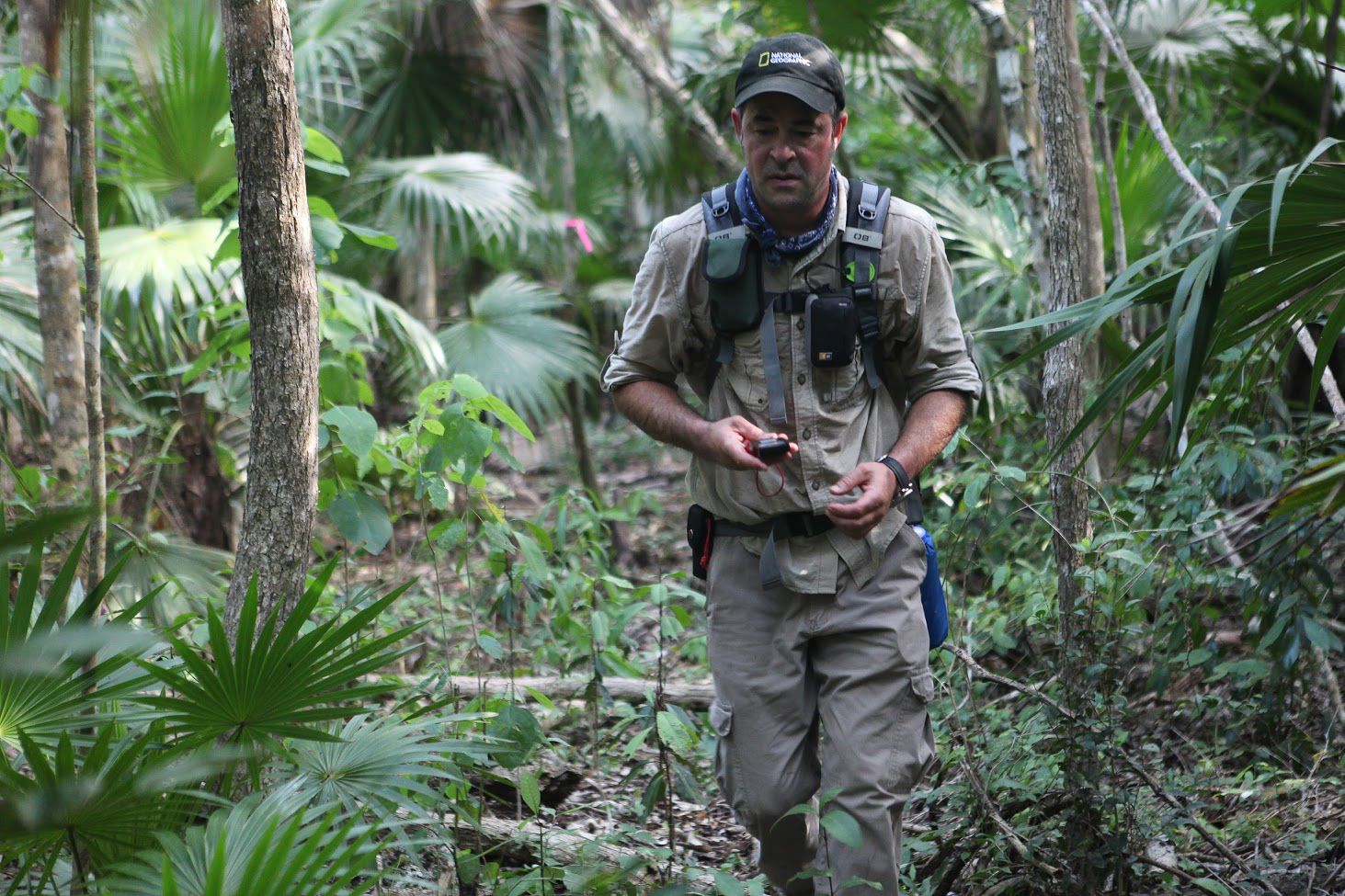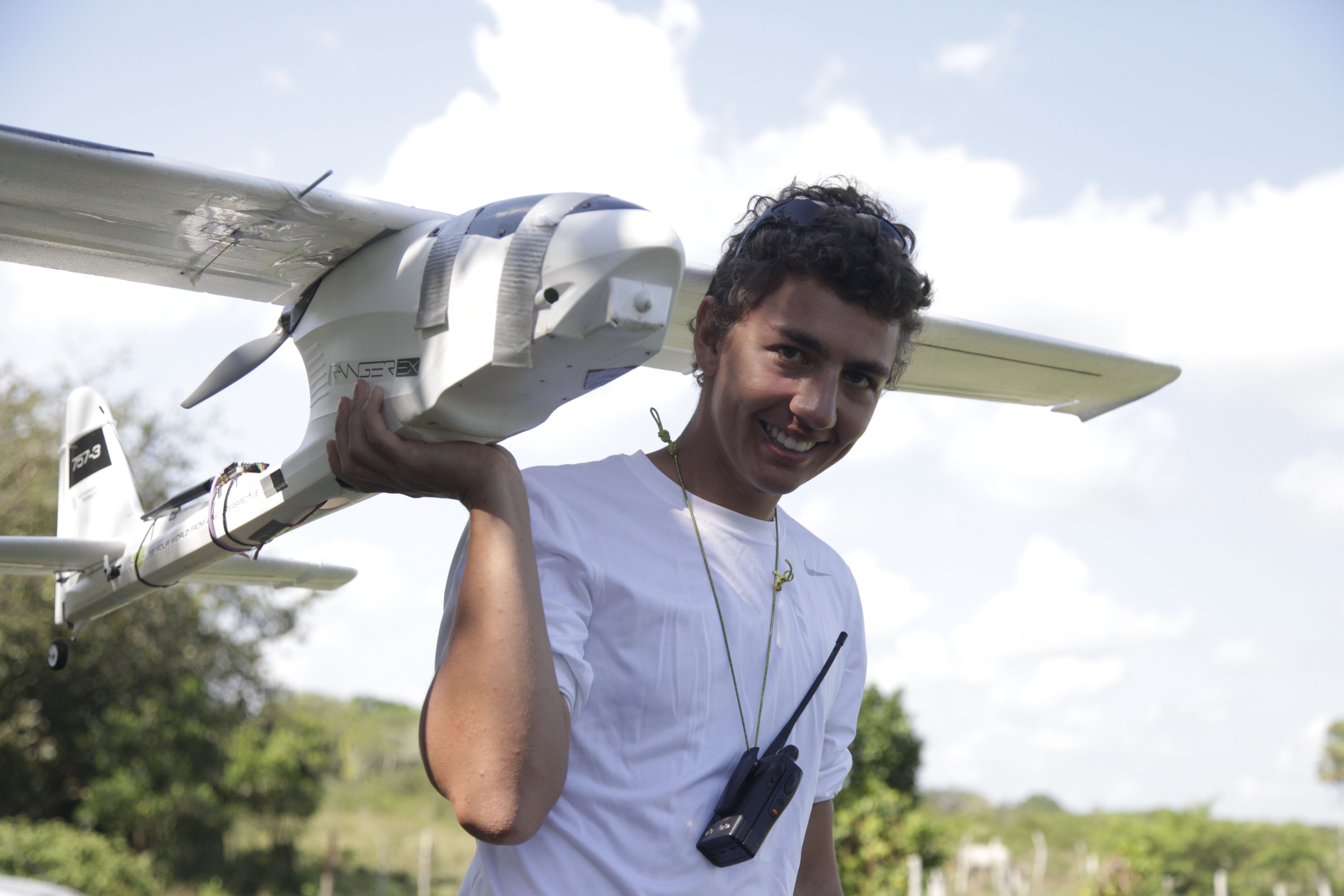From the National Geographic Society:
As a kid, National Geographic Young Explorer grantee Dominique Meyer was torn between becoming a firefighter or an archaeologist. Though his dislike for a high school history teacher led him away from archaeology and toward physics, Dominique re-entered the field as a student at the University of California, San Diego, when he was asked to help pilot autonomous drones for archaeological expeditions in Guatemala and Mexico. This work introduced him to Dominique Rissolo, Ph.D., and motivated Meyer to apply for a National Geographic Young Explorer Grant.
In September 2015, Meyer and expedition team member Rissolo embarked on an expedition to the Mexican state of Quintana Roo. Just a four-hour drive from the chaise lounges and frozen cocktails of Cancún resorts, the Southeastern Mexican state is home to dozens of ancient Maya settlements. Believing that more, never-before-documented settlements might exist in the area, Meyer and Rissolo, along with other members of the Center of Interdisciplinary Science for Art, Architecture and Archaeology (CISA3), began research in Quintana Roo. Their goal was to understand the overall distribution of Maya sites across the Yucatán Peninsula.
To survey Quintana Roo, the team used low-cost, autonomous fixed-wing drones. Unlike helicopter drones, which can only fly for 30 minutes at a time, fixed-wing drones have flight times of several hours. This meant the team was able to get substantial footage from fewer flights at a lower cost. Using infrared, LIDAR, and visible light, the drones gathered data that the team then correlated with satellite imagery in order to create a 3D digital elevation model.
From the digital elevation model, the team was able to pinpoint where “anomalies” exist in the landscape and target those as likely sites for undocumented Maya settlements. This approach allowed them to target the most promising areas without wasting time or resources. Their method paid off as they discovered three never-before-documented sites, two of which contained pyramids and small artifacts.
This expedition also proved that the advantages of drone technology stretch beyond reducing time and cost. In Rissolo’s words, “drones are a catalyst for collaboration.” Using drones in archaeological research has brought engineers, with the required technical skills, and archaeologists together in a new way. Rissolo believes that this collaboration benefits both fields and results in more people involved in the mission of conserving cultural heritage.
However, at the same time that drone technology has improved and become more accessible (thanks in part to 3D printers), it has also become more closely regulated by the Federal Aviation Administration. Increased regulations and restrictions threaten to disrupt the progress being made across scientific fields through drone technology.
For everyday explorers interested in using drones, Meyer cautions that “while drones are ideal platforms to collect certain types of data, they will unfortunately not solve all problems.” He recommends viewing drones as just one “tool within a toolbox,” meant to complement other methods for collecting data.


Comments
Interesting read, thanks for sharing.
Translated in French here / traduit en français ici : http://escadrone.com/robots-volants-a-recherche-citees-perdues